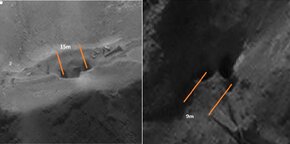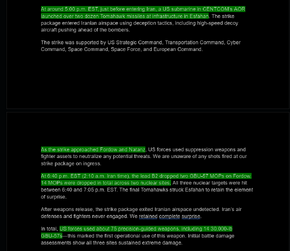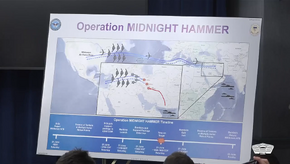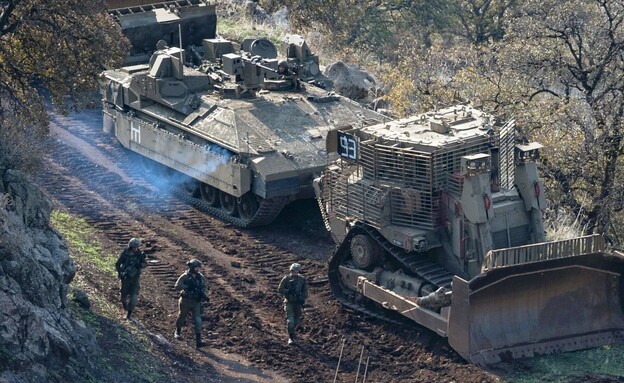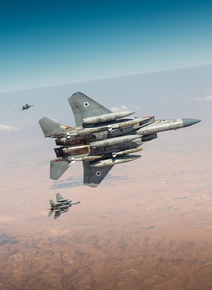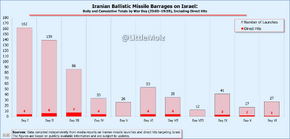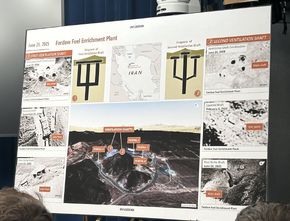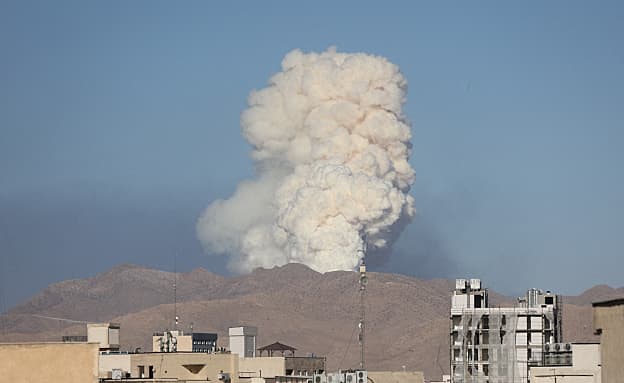would the detonations have been powerful enough to breach any massive blast doors between sections of fordow?
I don't think anyone here is qualified enough to answer that.
We do not know if Iran installed blast doors there. If they did, we don't know their capabilities.
We do know there was precise intel on the tunnel layout, and the strikes focused on one end of the main hall (centrifuges).
Centrifuges themselves don't require a bomb to destroy. From what I've read so far, it seems they are a sensitive piece of equipment that requires a very careful and controlled shutdown sequence due to their extreme spin frequency.
Simply shutting off their electricity could destroy them.
That is what was allegedly done a long time ago with Stuxnet.
Ok, I guess we agree that earlier bombing campaign would have been more effective, which again brings the question of why wasn't it done before, if not in Obama's term then in Trump's first term, if it was so easy today it would have been a walk in the park back then.
Why doesn't the US attack China now? Or attack Russia in 2022? Could really turn this into a 1 month war instead of the 3+ years it is now.
The reason is casus belli. Another is deterrent. Both are nuclear nations, and Iran had a significant conventional capability before October 7th 2023, pointed at Israel from 7 directions, including ground invasion from 2-3 of those.
You cannot just attack a nation without a casus belli. It is important not only for gathering international support, but also for domestic support which for some nations is about as crucial, if not more, than the military aspect.
Russia had to build up for years the "nazi Ukraine" narrative.
China had been talking about a unified China for decades.
Israel achieved its casus belli properly only after October 7th 2023.
Otherwise it would risk entering the deadliest war in its history with no foreign support.
So a historical precedent is a fictional war in the future, funny how history works.
I used an example that I thought you would find familiar. I guess it wasn't.
Another example would be a Russian invasion into Ukraine in 2014 instead of 2022. Would have been so much easier. But one could wonder why not do it back in 1991.
You can see that even after so much waiting, Israel was able to crush every forecast and emerge from this war with very little homefront damage, while crushing Iran's conventional and nuclear capabilities, and its proxies.
In one of the IDF's early briefings about the campaign in Iran, they said Iran planned a massive expansion of missile production capability, to quickly multiply its missile stocks within a few years.
Regardless of validity, this indicates Israel did not see Iran as an insurmountable challenge yet.
Iran would realistically require tens of thousands of MRBMs and thousands of TELs to do lasting and meaningful strategic damage to Israel that would be worthwhile from Iran's perspective.
You're kidding, right? In how many wars was Israel involved just in this century?
Of its own initiative? 0.
What? How did you get that connection? North Korea and China are states that were in a war with the United States, they signed a cease fire but not a peace treaty, if the United States attacked either of them they would be breaking the truce and de jure returning to the state of war with both of them.
How does this situation correlate to Iran, Israel has been fighting on again off again wars with Hamas and Hezbollah for years without an Iranian intervention.
So your argument is a legal one now?
Israel and Iran have been in a state of armed conflict for decades through proxies, which has been an accepted norm for even longer than that.
Every confrontation between Israel and Hezbollah is also one with Iran, via proxy.
Every confrontation with the Houthis and Iraqi PMF and Assad's Syria, were also that.
But if it is direct confrontation that you seek then look no further than April 2024, when Iran fired >350 missiles and drones at Israel, from Iran proper.
Not in response to an Israeli attack on Iran, but against an Iranian proxy in Syria.
You are talking about the pager attack, I don't quite remember but i think it was around 1200 explosive pagers, majority of the victims were of course civilians
Then I can confirm you don't remember.
there is a name we use for an attack used mainly on civilian targets causing panic and shock throughout country whether its appropriate here I'll let you decide
What's that name?
without even making a significant ground maneuver", you mean attempting to create a buffer zone in southern Lebanon, encountering heavy resistance which was not expected, realizing it would take heavy casualties to secure it and instead agreeing to cease fire.
So you once again shifted the argument to historical revisionism?
Against strange bragging rights Iranian casualties are in the hundreds per last reports I have seen and on both sides vast majority of the loses were civilians, killing more of the enemies civilians is indeed a strange thing to brag about, but you don't have to go to Iran, you can look at Gaza, we have lost count how many civilians were killed there.
And in Israel "only" 28 were killed by Iran.
Solid ratio and big L for Iran.
Demolishing Syrian facilities with zero casualties is indeed impressive until you realize nobody was defending those facilities. The only way for casualties to occur is for soldiers to accidently trip and set off a grenade or some kind of friendly fire incident.
Clearing the facility of hostiles is a major show of competence for both the ground team and aerial team providing CAS.
Why did Israel stop and ask for cease fire?
It achieved its goals. Between non-peer adversaries, there is usually a point where returns are diminishing. Yet expenses grow or remain unchanged.
At that point it's usually best to stop.
With Iran's senior leadership dead, air defenses, MIC, and nuclear program destroyed or paralyzed, remaining targets are decreasingly strategically valuable.
If we take your claim at face value and Israel continued this operation for a month or two there would be nothing left of Iran
Leaving nothing of Iran is not a war objective. To the contrary. Many economical assets were left intact to avoid antagonizing the general Iranian population should they choose to initiate an uprising in the future. Israel's relationship with a post-revolution Iran are strategically important.
The rest of the claims we can divide into wishful thinking such as 90 percent interception rate
To the contrary. Every claim or argument you challenged, I responded to with facts, numbers, statistics, or footage.
You have yet to present any shred of evidence to any of your claims.
Why did the Trump administration need to give concessions to Iranians to accept the cease fire by lifting some restrictions on their oil exports
What restrictions on oil exports were lifted?
You are so blinded by bias that you are now inventing claims I supposedly made. What I said, and you can go back and read it, was that both sides were exaggerating the damage they were doing. Never have I claimed that Israel was suffering more or even substantial damage, and if you ask me directly which country suffered more physical damage I would have of course answered Iran. There are of course other loses we could talk about but its still too early and dust needs to settle a bit before we get into that kind of analysis
You said Israel entered a predetermined, lost war, that all its military objectives were impossible to achieve, and that Iran inflicted serious damage upon Israel.
You're claiming not to have insulted me while in the same sentence calling me a child. Ironic, isn't it?
If you wanna be offended, go ahead. I can't make your decisions for you.
